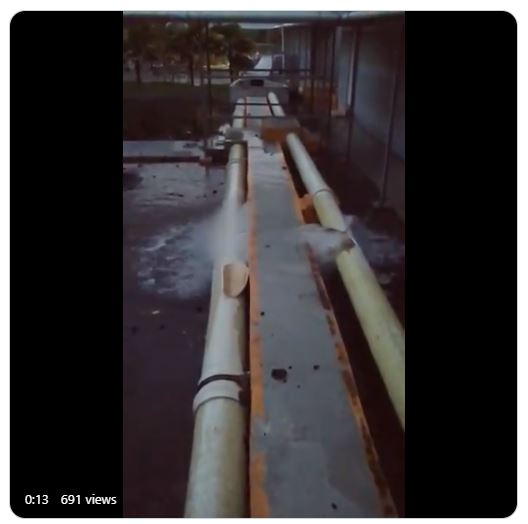Police moving into Changuinola to quell the latest protest. Anonymous photo from FRENADESO’s Twitter feed.
13 years after homes and farms began to be bulldozed, 11 years after an agreement, no relief but ongoing protests
by Eric Jackson
The Committee takes note of the information provided by your Government, particularly in relation to the measures adopted with a view to implementing the November 26, 2009 Tripartite Framework Agreement. However, the Committee expresses concern about the information that indicates that this Agreement has not yet been fully implemented.
United Nations Office of the High Commissioner for Human Rights
Committee for the Elimination of Racial Discrimination
November 24, 2020
Ricardo Martinelli’s tabloid deplores the vandalism.
On December 4 in Changuinola, a small group of men armed with sticks, stones and machetes entered the premises of a tilapia project that a local subsidiary of the Virginia-based AES energy company was developing and vandalized the installation. The attack escalated from weeks of road-blocking protests by local Ngäbe families. Special riot police were flown in and there has ensued a great hue and cry from the company, the Chamber of Commerce and several of the rabiblanco media.
Lost in the discussion is that this dispute began in 2007 with the destruction of homes and farms by the company. Some 4,000 people were displaced byh force of arms — both company goons and police — with the company and government having no apparent intention of compensating the people whose homes and livelihoods were demolished for the joint AEC and Panamanian government venture to dam the Changuinola River and generated hydroelectric power.
The dispute has been ongoing ever since, with the Inter-American Human Rights Commission and the United Nations siding with those who were displaced, a 2009 agreement for replacement of homes largely abrogated and successive administrations and the company playing circular pointing fingers games about who owes compensation.
On Radio Panama, AES executive Edgar Ivankovich blew off the protests: “They are small groups.”
“When the dam construction was finished the company stopped recognizing the agreement,” one of the leaders of the community of Charco La Pava in the Ngäbe-Bugle Comarca, Rafael Ábrego, told TVN news.
It’s not just a local problem, because over many decades of land and resource grabs there is an established reputation that the Panamanian government and the companies with which it does business considers rural people, from coastal and island fishing villages to indigenous lands, as obstacles to be removed as cheaply as possible rather than as people with any sort of rights. Such communities tend to act to defend their interests in light of that reputation.
Contact us by email at fund4thepanamanews@gmail.com
To fend off hackers, organized trolls and other online vandalism, our website comments feature is switched off. Instead, come to our Facebook page to join in the discussion.
These links are interactive — click on the boxes












